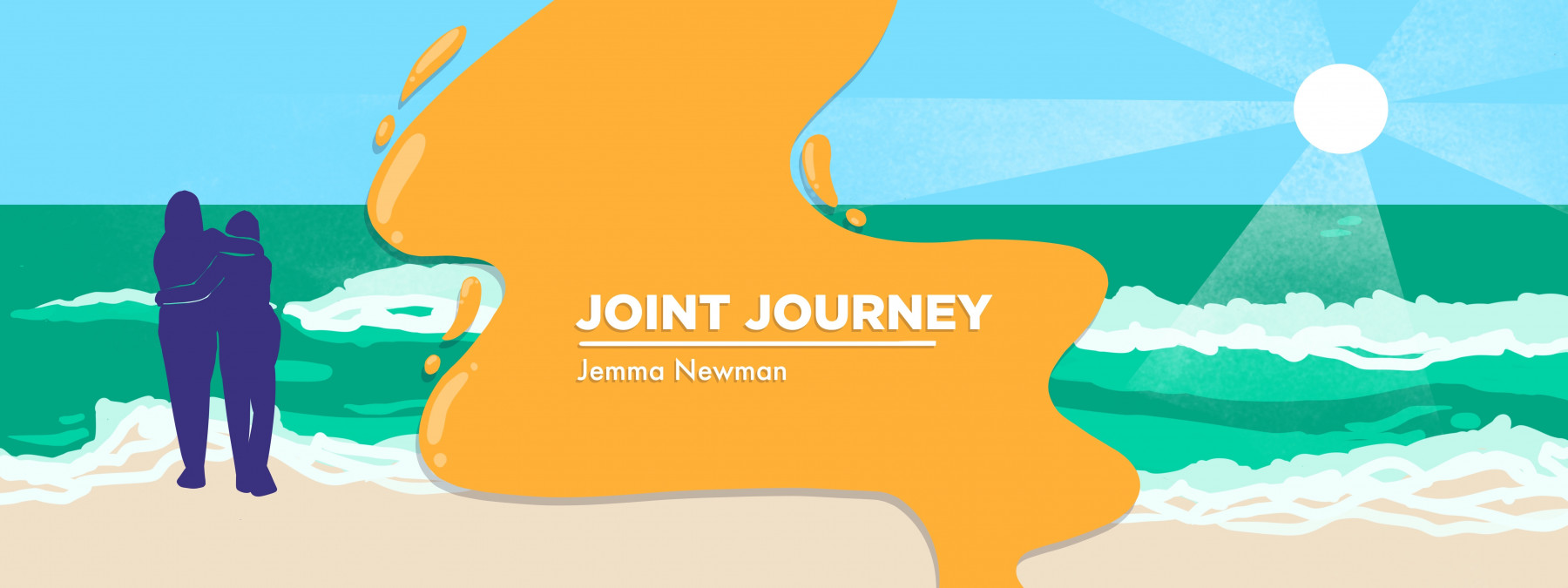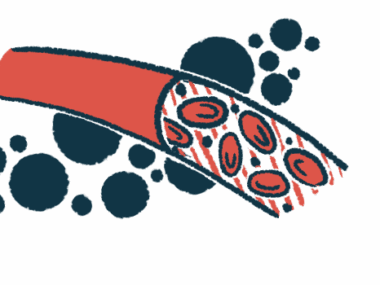A painful ankylosing spondylitis puzzle: Sore shoulders and elbows?
Seeking treatment for joint pain that is making common tasks hurt
Written by |

Lifting his toothbrush toward his mouth, my husband, Dave, grimaced in pain. “Elbow still bothering you?” I asked, although I already knew that his elbow and shoulders had been causing him increasing discomfort for months.
You’d think a tiny, almost weightless thing like a toothbrush shouldn’t be painful to lift. Or a glass of water, a fork, or any of the other countless minor arm motions we make all day without really thinking about them.
Although Dave was diagnosed with ankylosing spondylitis (AS) several years ago, he’s been experiencing a new kind of pain and inflammation in his shoulder and elbow over the past several months. It’s a bit of a puzzle as it’s in a different location from his regular AS inflammation.
Normally, Dave’s not a person to complain lightly. He’s an athletic, energetic guy in his early 40s who enjoys lifting weights and barreling across hills on his bike in the dark. (Nighttime, cross-country bike riding is cooler in the searing hot summers of Perth, Australia.) When he occasionally comes home from a bike mishap, he shrugs off the bloody laceration with a smile, even though I’d probably be wailing loudly if I’d injured myself like that.
So when I can see Dave’s lips pressed together in pain, or notice that he’s cradling one elbow and reluctant to pick up items, I know his joints are painful enough to be concerning.
Conventional tactics aren’t enough
In the search for answers, Dave saw a physiotherapist multiple times to explore if the joint issues might be tennis elbow or perhaps a torn tendon. But he was told that his joint pain didn’t meet any of the normal criteria for run-of-the-mill joint issues or tendonitis.
In an attempt to improve his joint pain, the physiotherapist advised him to stop any exercise that used his affected joints for a period of time, but Dave saw zero improvement when he did that. Compression bandages, range-of-motion exercises, and physical therapy had little to no effect.
Inspecting his shoulders and elbows under a bright light, I can see that his affected joints are strangely swollen and have a visible, odd puffiness under the skin, even to my medically untrained eye.
Is joint pain related to AS?
The fact that several joints have been simultaneously affected makes us both think his issue is related to AS. It’s not just one shoulder or elbow that might’ve been injured or overused. It seems more like an AS flare, where multiple joints in the body can become inflamed at the same time.
As Dave explained in frustration, after yet another fruitless physio session, “I’ve been through all of this before when I was first diagnosed with AS. Yet again I have pain and inflammation that doesn’t respond to any normal therapy and that no doctor or physio can explain or help me with. I have enough experience with my ankylosing spondylitis now to be pretty sure these new symptoms are related.”
When it comes to AS, the most discussed symptoms are pain and stiffness in the back, in particular the lower back or sacroiliac joints. However, peripheral joint pain or enthesitis (which is inflammation where tendons and ligaments attach to bones) is also in the spondyloarthritis family.
The Spondylitis Association of America also explains, “In a minority of individuals, pain does not start in the lower back, or even the neck, but in a peripheral joint such as the hip, ankle, elbow, knee, heel, or shoulder.”
I was surprised to discover just how common it is for people with AS to have issues in peripheral joints. The CreakyJoints website quotes Theodore R. Fields, MD, a professor of clinical medicine at Weill Cornell Medical College and an attending rheumatologist at the Hospital for Special Surgery in New York City, as saying, “About half of people with psoriatic arthritis and ankylosing spondylitis have enthesitis.”
Joan Appleyard, MD, a rheumatologist at Baylor College of Medicine in Houston, adds that “Symptoms are pain sometimes accompanied by swelling.”
Frustrated but still proactive
Dave made the decision to stop seeing a physiotherapist for his painful and swollen elbow and shoulders and to raise the issue at his next rheumatologist appointment. The only remedy that has helped him is to take strong nonsteroidal anti-inflammatory drugs, which he’s resorted to after nothing else had an effect.
It’s disheartening to feel that you’re getting some level of control over your disease, just to have it change direction and add areas of pain to the mix. I’m proud of my husband for approaching this unpleasant development logically and calmly and following the steps recommended by trained medical and physio professionals, but also trusting his own instinct to know when to seek assistance from another specialist.
Note: Ankylosing Spondylitis News is strictly a news and information website about the disease. It does not provide medical advice, diagnosis, or treatment. This content is not intended to be a substitute for professional medical advice, diagnosis, or treatment. Always seek the advice of your physician or other qualified health provider with any questions you may have regarding a medical condition. Never disregard professional medical advice or delay in seeking it because of something you have read on this website. The opinions expressed in this column are not those of Ankylosing Spondylitis News or its parent company, Bionews, and are intended to spark discussion about issues pertaining to ankylosing spondylitis.







George
I'm now blaming enthesitis for my near life-long problem with my hands and wrists - this because I have AS and I've never gotten an explanation for those problems. Ibuprofen doesn't work as well for the hands and wrists as it does for my other ailments. I take two ibuprofen once or twice a week, before exercising or walking. Ibuprofen, regardless of what you often hear, is one of the most valuable drugs ever created. If you do not take it daily, it's unlikely to cause problems and can do immense good. One danger with it is that it makes it easier to over-exert yourself resulting in injury. The main thing I've done for my hand problem is become ambidextrous, and back-off as soon as I recognize a problem is developing. If I go too far, the wrists take a long time to heal. I've never had elbow problems - although I believe I smashed an arm causing elbow ligament damage fairly recently. I've hurt my shoulders many times but they always heal ok - except when AS kicked my butt and both shoulders needed surgery. Like most of us, I have crunchy joints, even including the temporomandibular (pointed out by an ENT, otherwise I would never know). I had to rely on ibuprofen (dangerously for the long term) before I got diagnosed and got on a biologic. That ibuprofen does so much is a clue for AS. Oral hyaluronic acid does amazing wonders for my neck (took almost three months to start working). I used to ride my road bike late (being a habitual late starter thanks to AS) and regularly (virtually always) made it home from my time-trial in the dark with flashing lights. (I lit up when I read your crazy husband rides in the dark!) I stopped cycling years ago because I take too many risks. Cycling gets me going extremely fast like nothing other. I was born to run, cycle, and swim. AS makes us do crazy habits we wouldn't otherwise do.
Jemma Newman
George do you find ibuprofen works long enough for you? Sometimes I get a bit frustrated that I only get a few hours relief from it - not long enough to sleep through the night anyway! Wow that's pretty incredible you've worked on becoming ambidextrous, actually makes a lot of sense but I don't know if I could successfully cut up a steak or paint with the wrong hand haha.
George
Yes, ibuprofen (I take two) is strong the first few hours but its effect is longer because I benefit from having pain and inflammation reduced in the first place. Also, most drugs or anything has a greater effect on me than for most people. For some reason I tend to be highly sensitive, which is mostly a bad thing.
[Using a steak knife in the left hand is something I did not learn to do. Most things you can learn to use the offhand if you spend any time on it, but there are a few things that don't seem right to even try.]
Jon
Experienced exact same issues but have particular pain in hands and feet. My pain mgt Dr. Prescribed a lotion consisting of several medicines ( cyclobenzaprine, ketamine, neurotine, and 1 other that escapes me at the moment) Gives great relief to enthesitis for an hour or two. Great for areas it can penetrate to easily such as hands, feet, elbows, other joint specific. Email if u want more details.
Jemma Newman
Ahhh interesting that it's in your hands and feet Jon, that's where my sister gets a lot of pain too. I will definitely mention that lotion to Dave and see if it's something his rheumatologist recommends, really appreciate you sharing a solution that's been working!
HW
You are correct it fits AS. Some of us get it all the time. Then it is here then it is there. Six months to a year and then one day you realise it hasn't been sore for a while. ( I don't see hot and cold packs in the remedies you have tried. Guessing you did).
Jemma Newman
Thanks so much for commenting HW - it's so confusing when AS symptoms change, or appear and disappear like you said! Yep hold and cold packs are a staple, sometimes I forget to mention them so thanks for the reminder!